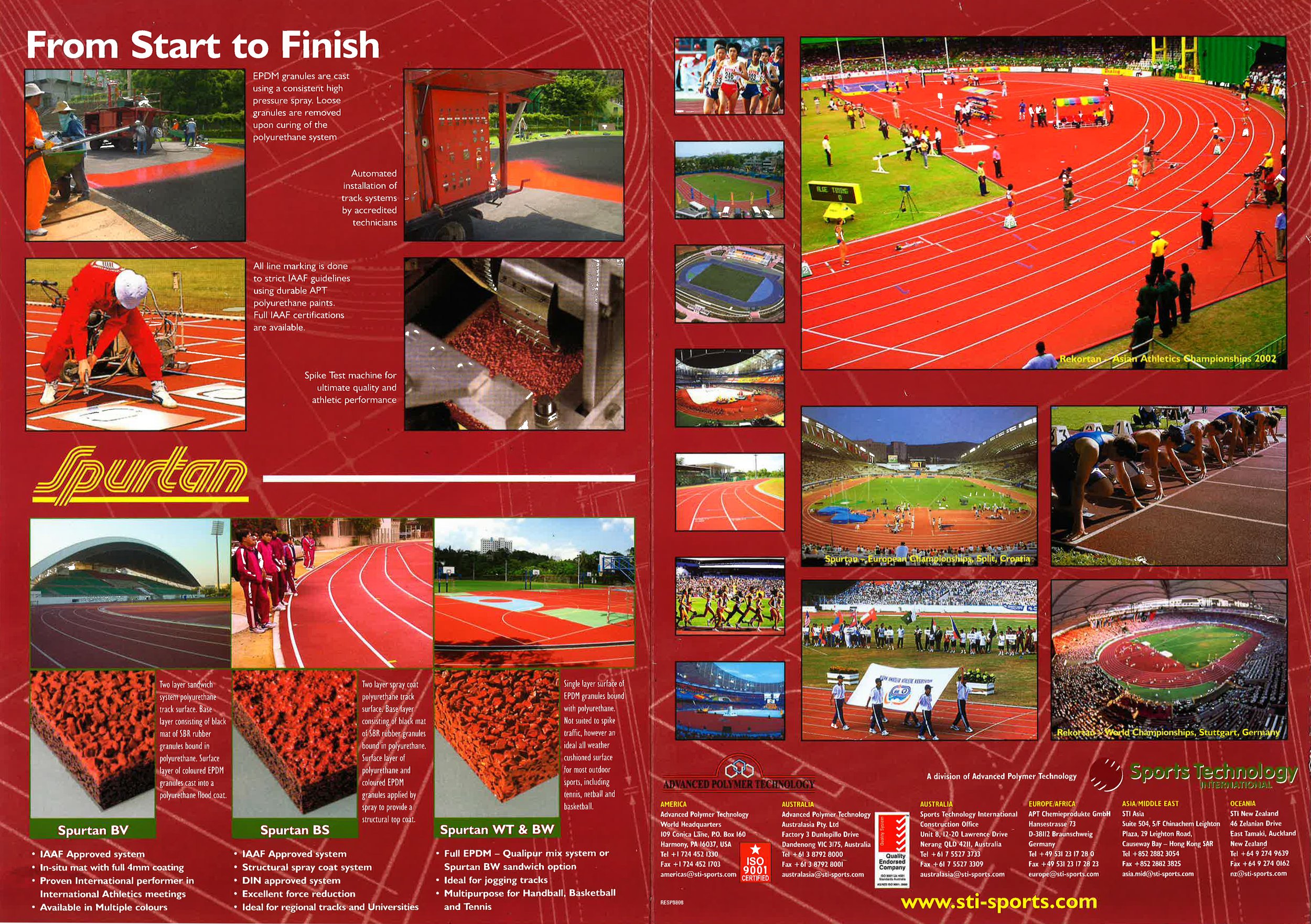A 50-year golden history
From Tartan to Rekortan
Rekortan’s track history is a long and colorful one. And it starts with Tartan tracks. Tartan is the name of the first synthetic track ever used at the 1968 Olympics in Mexico City and is a Sport Group brand still used today in Europe.
Developed by shotput champion, Bill Nieder and the world’s fastest man over a mile at the time, Don Bowden, Tartan replaced the traditional red ash cinder tracks and, as the original brand, it is synonymous with synthetic tracks to this day.
Tartan tracks also gave Rekortan their name. Rekortan is derived from two words. Rekort, which means ‘record’ in German, combined with ‘tan’ from Tartan. Combined, these two words form Rekortan.
Polytan Enters the Race
In 1974, Polytan entered the world of international athletics furnishing the Ernst Happel Stadium in Vienna with a new synthetic track system. Since then, Polytan has built a reputation as one of the world’s most respected track manufacturers and installers.
More recently, under the ownership of Sport Group, Polytan and Rekortan track systems were brought together which allowed an unparalleled integration of knowledge from both. Combined under Rekortan, we have the most World Athletics certified tracks.
The Track of choice for 7 Olympic Games
Sport Group, as the owner of the original synthetic track surfaces, Tartan and Rekortan, have a long history with the Olympic Games. Our heritage brand Tartan was chosen for the Mexico City (1968), Montreal (1976) and Moscow Games (1980).
Rekortan, as a German technology premium track system, was first installed at the Olympic Stadium in Berlin. The soon widely-celebrated Rekortan tracks went on to feature at four Olympic Games including Munich (1972), Los Angeles (1984), Seoul (1988) and the Sydney warm up track (2000).
Record-breaking times in Los Angeles (1984)
Following the terrorist attack which haunted the Munich Olympics and the widespread boycotting of the Moscow Games due to the Soviet-Afghan war, the Olympics needed its time in the sun again. Los Angeles were that Games.
Carl Lewis emerged as the shining star, winning four Gold Medals in the 100m, 200m, 4 x 100m relay and long jump. The Rekortan track on which his victories were staged, also saw the setting of his two records at that Games; an Olympic record of 19.80 seconds for the 200m, and the 4 x 100m relay World Record at 37.83 seconds.
Ben Johnson and Carl Lewis at the Seoul Olympics (1988)
The story continued with an unexpected twist at the 1988 Olympics in Seoul which was also staged on a Rekortan track. Having won the 100m in 9.99 seconds in Los Angeles, with Ben Johnson finishing in Bronze-medal position, the tables looked to have turned 4 years on. Ben Johnson crossed the line first in 9.79 but was later stripped of his medal and the Gold was returned to Carl Lewis who was next over the line in 9.92.
For over 50 years, Rekortan has set the pace
The Rekortan archives tell a rich story of our history with the sport.
The wonderful brochures below from the 90s, include testimonials from some of the sport’s greats including Michael Johnson and British Athletics Director of coaching, Frank Dick.






It also celebrates the numerous records that Rekortan tracks have recorded including a phenomenal run at the Munich Games:
“Rekortan was… used for the Olympic Games at Munich, where 11 World Records and 20 Olympic records were set. From that date on the challenge was laid down to meet the Rekortan standard – a track that is fast for sprinters, but kind to distance athletes.”
From Olympic Games, to World and Youth Championships, to Commonwealth Games amongst others, Rekortan has been a consistent and dominant presence within the international athletics calendar. See our timeline of events from the last 50 years.

